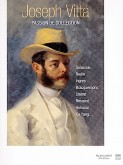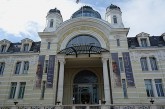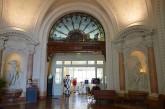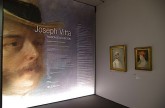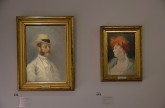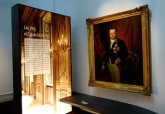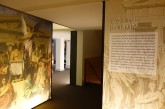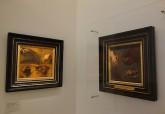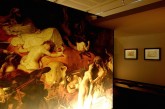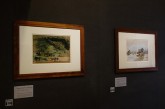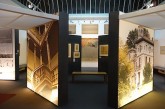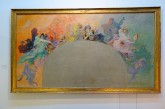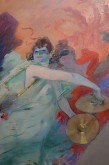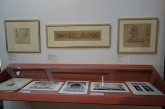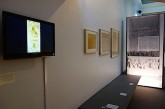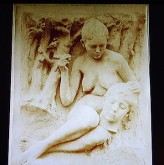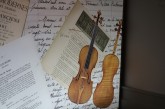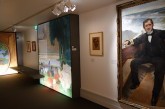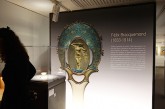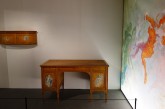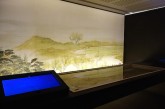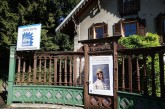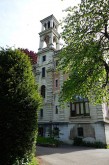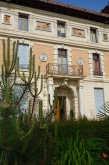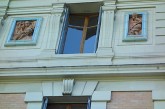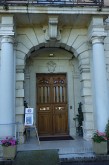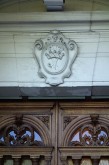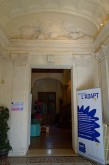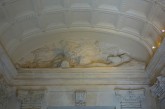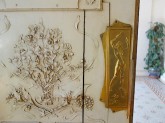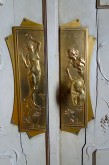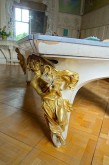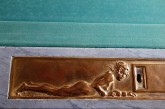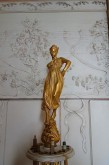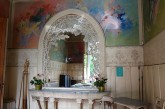The browser will either open the file, download it, or display a dialog.
Joseph Vitta: Passion de collection
Palais Lumière, Evian-les-Bains
February 15–June 1, 2014
Curators: François Blanchetière and William Saadé
Catalogue:
Joseph Vitta: Passion de collection.
Essays by Catherine Adam-Sigas, Réjane Bargiel, François Blanchetière, Jean-Paul Bouillon, Josiane Boulon, Mathurin Maison, Alessandra Montanera, William Saadé, and Qinghua Yin. Entries by Adam-Sigas, Valentina Barberis, Bargiel, Chantal Beauvalet, Blanchetière, Etienne Blondeau, Bouillon, Boulon, Denise Emery, Michel Giraud, Montanera, Ollivier Ramousse, Saadé, and Yin. Appendices by Jean-François Dumoulin and Marguerite Brun. Chronology by Saadé.
Paris: Somogy Editions d’Art, 2014.
271 pp.; 176 color illus., 6 b&w illus.; catalogue entries of exhibited works.
€35
ISBN: 978-2-7572-0779-6
The collector and art patron Joseph Raphaël Vitta (1860–1942) can be described as all but forgotten. Yet for specialists at auction houses and other close readers of catalogues and frame labels, this generous museum donor remains a significant brand. An exhibition held in 2014 at the Palais Lumière in Evian-les-Bains matched a face to the name recorded so frequently in provenance lists. Multiples of his nonchalant portrait in summer dress—signed by Jules Chéret and inscribed à mon ami Vitta—fluttered from February through May on banners posted along the French shore of Lake Geneva. Chéret’s image also graced the cover of a handsome catalogue produced by Somogy Editions for Joseph Vitta: Passion de collection (fig. 1).
The recent exhibition was the third show including material from Vitta’s holdings to be mounted at the Palais Lumière, designed in 1900 as an elegant thermal bathing establishment facing the lake (fig. 2). The Vittas were a prominent Jewish banking and silk dynasty from the Piedmont region in Italy with a branch in Lyon since the mid-nineteenth century. They had vacationed in Evian even before Joseph Vitta’s father, Baron Jonas Vitta, purchased a choice lakeside property in 1891. He commissioned a new villa, but died suddenly in June 1892. Joseph Vitta, his older son, supervised the construction and decoration of the villa, called La Sapinière, completed shortly before work on the town’s new baths began.[1]
La Sapinière has survived for over a century more or less intact. The last Vitta owner was Joseph’s sister Fanny (1870–1952), who inherited the villa when their mother died in March 1901. Fanny’s husband, the explorer Edouard Foà, died three months later, leaving her with an infant daughter; her son Jean would be born in January 1902. Jean Foa (Fanny’s son dropped the accent) became an aviator and an executive with Air France, but sustained grave injuries when serving with the infantry at the Battle of Monte Cassino in 1944. When he died in 1946 his mother donated the property to establish a foundation in Jean Foa’s name to rehabilitate wounded aviators and others injured in the war. Now part of the organization L’ADAPT, the Centre Jean Foa in Evian continues its work of integrating the handicapped through professional re-education.
Fanny Foà’s foundation thrived in the post-war period, but the city’s luxury baths declined. By the 1980s the abandoned building had lost its dome and paired campaniles decorated by ceramicist Alexandre Bigot, whose glazed stoneware at the spa in Vichy (1903) still delights tourists and those taking a cure. Rescue of the Evian baths began in 1986, when the façade, main hall, and vestibule were inscribed in the French list of historical monuments. A decade later, the city of Evian purchased the building, which retained its attractive frontage where white stone alternates with pale yellow glazed bricks. In 2006, after a two-year reconversion by François Chatillon, now chief architect of historical monuments, and his colleague Michel Spitz, the Palais Lumière reopened as a cultural center, médiathèque, and congress hall.[2]
In the summer of 2008 the show Jules Chéret: L'esprit et la grâce enlivened the new exhibition galleries, once the men’s bathing area of the thermal establishment. On display were many of the hundreds of works donated by Joseph Vitta to the Musée des Beaux-Arts Jules Chéret in Nice; he was one of its founders and an ardent supporter. In 2009 François Blanchetière, curator at the Musée Rodin in Paris and Meudon, and William Saadé, curator emeritus of cultural heritage and professor at the University of Lyon II, investigated another facet of Vitta’s patronage for an innovative exhibition at the Palais Lumière: Rodin et les arts décoratifs (2009).[3] Superbly installed by Frédéric Beauclair, who would also design the show in 2014, the exhibition clarified the neglected subject of Auguste Rodin’s interest in the decorative arts, and one section of the catalogue noted Joseph Vitta’s contacts with the world’s most famous sculptor. In connection with the exhibition in 2009, La Sapinière opened its doors so the public could see the monumental works by Rodin in the vestibule.
During 2009, the year when many objects by Rodin were on display in the Palais Lumière, dozens of drawings, paintings, and works in the decorative arts formerly owned by Vitta—including rarities described as “unlocated” in the Rodin exhibition catalogue—changed hands in four auctions held in Paris by Artcurial. Baron Vitta’s collecting biography, partial as it is, has always been sifted from sales catalogues, and on the exemplary Artcurial site, keyword searches under “Vitta” yield an astounding snapshot of the surge of interest in his objects beginning in 2009. Three of the four Artcurial auctions that year featuring items Vitta owned were held in the Hôtel Marcel Dassault at No. 7, Rond-point des Champs-Elysées, not far from the apartment on the avenue where Vitta lived with his collection until around 1911.[4] The fourth—a general sale on November 30—took place at the Hôtel Drouot. The catalogue for the Drouot sale indicates a single work with a provenance from the Vitta holdings: a miniature painting from around 1500 of The Presentation in the Temple (Lot 215), attributed to Jean Bourdichon based on its similarity to the scene in the Book of Hours of Anne of Brittany in the Bibliothèque nationale de France.[5]
Baron Vitta had consummated his passion for acquisition at similar auctions from 1890 through the first decade of the twentieth century, then began wisely to disperse his collection through appropriate museum gifts, private sales, and a series of public auctions. Had he not done so, his property would have probably been seized by the Nazis. In 1939, four years after his final auction, the baron fell ill in his last home in Le Breuil, a village in the department of Allier in the Auvergne region and the birthplace of his wife, Malvina Bléquette. Threatened in 1940–41 by increasingly severe anti-Semitic ordinances passed by the Vichy government, Baron Vitta was one of nearly 800 foreign Jews in the department of Allier subject to internment and eventual deportation. The villagers of Le Breuil—then in the free zone below the line of demarcation that cut France in half—allegedly petitioned unanimously on his behalf. He died at home on December 29, 1942, weeks after the zone libre was invaded and occupied by the Germans. Despite his Jewish parentage, he was allowed burial near the Bléquette family plot in the local cemetery under a granite slab reading, Qui ripose Signore Barone VITTA / Cavaliere del Ordine della Corona d’Italia.[6]
A retired French general and resistance hero, Edouard Charles Albert Laurent (1896–1972), published the first and only biography of Baron Vitta and his family in 1966.[7] Art historians Gabriel P. Weisberg and Jean-Paul Bouillon were the first in the post-war period to insist on Vitta’s importance as a patron of the decorative arts.[8] Their indispensable studies were based on the acquisition by the Cleveland Museum of Art in 1978 of an objet phare. This was the hand mirror in translucent (plique-à-jour) enamel, gold, and ivory commissioned by Vitta around 1899, a collaborative work by Félix Bracquemond, Alexandre Riquet, and Rodin. When so much new material related to these three artists came to light in 2009, the Rodin shows in Evian and later in Paris seemed to merit at least one sequel: an exhibition on the collector himself. Blanchetière and Saadé resumed their work and borrowed some of the new finds to display in the Palais Lumière in 2014.
The curators’ chief task was to select a hundred objects among the multitude that Vitta is known to have acquired. Many are now the property of museums in London, Birmingham, Nottingham, Boston, Cambridge (Massachusetts), Chicago, Cleveland, Los Angeles, New York, Toledo (Ohio), Washington, Milan, São Paulo, and Zurich; these costly loans were excluded. Neither The Death of Sardanapalus by Eugène Delacroix nor a tapestry formerly owned by the Duke of Alba, both once in Joseph Vitta’s collection, could be spared from the walls of the Louvre, but the museum did lend an oil study by Ingres for Apotheosis of Homer (1827) and a late drawing he made after his ceiling.
Hundreds of paintings and drawings passed through Vitta’s hands during his two decades of active collecting. He bought works as disparate in size and origin as a portrait miniature by Jean-Baptiste Isabey and a fifty-three-foot-long Chinese scroll from the Qing dynasty. Until it traveled to the Palais Lumière in 2014, the handscroll by the eighteenth-century painter Xu Yang had not left Nice since Vitta donated it in 1935 to the Musée des Beaux-Arts; it has only rarely been unrolled. The baron also acquired sculpture ranging in size from netsuke—like many of his fellow admirers of these Japanese toggle fasteners, he preferred them still attached to their magnificent inro cases—to the stone bas-relief more than seven feet long commissioned from Rodin for the entrance to Vitta’s private gallery on the Champs-Elysées in Paris. No netsuke or Japanese lacquer objects were in the Evian show, but the Musée Rodin lent the huge relief. Blanchetière and Saadé chose no more than a dozen artists and the most significant and available objects to tell the story of Joseph Vitta and his desire to own their work. By selecting a few examples by each of his core artists, the curators avoided overwhelming the viewer with a show as strenuous as an annual Paris Salon.
Visitors approached the exhibition through the restored entry hall of the former baths, passing stone allegorical figures of the four main sources of Evian waters over the corner drinking fountains, originally the buvettes of the spa (fig. 3). The introductory foyer of the show presented the collector on the chronology panel as a colossal head, his eyes seemingly scanning his baronial estate (fig. 4). The inscription by Jules Chéret on the original pastel portrait on the adjacent wall revealed that his subject was indeed posing in the country of his ancestors, Casale Monferrato, a town in Piedmont on the River Po east of Turin. The artist noted the date, October 4, 1908, and the place as Mandoletta, near Casale. Hanging next to Vitta was a portrait of Malvina Bléquette, who had been his companion since around the turn of the century and who, through their marriage in 1922, would become the baronne (fig. 5). The date Chéret inscribed on his portrait of Vitta—a man who apparently shunned images of himself—suggests that the artist may have produced this pastel to please Malvina: the date was her twenty-seventh birthday. Earlier that year she had purchased land on the edge of Le Breuil where she would later build the villa that would be her husband’s refuge at the end of his life.[9]
Adjacent to the exhibition foyer, a corridor with wall texts began with an abbreviated but essential genealogy of the Vitta family (fig. 6). Joseph’s great-grandfather Emilio (1756–1820) had purchased the luxurious Villa Natta in the center of Casale Monferrato and moved his family out of the nearby ghetto. In 1806 Emilio Vitta installed a silk factory in the disbanded Santa Chiara convent and forged the family’s initial link with France when he became a member of the Assembly of Notables invoked by Napoleon to discuss Jewish affairs. He represented Marengo, a French department from 1802 until 1814, as a lay representative at the Grand Sanhedrin in Paris in 1807. Emilio’s son, Joseph’s grandfather and namesake Giuseppe Raffaele Vitta (life dates uncertain), became the first Baron Vitta in the mid-nineteenth century; he was elevated to the nobility by King Victor Emmanuel II of Piedmont-Sardinia. Baron Giuseppe Vitta’s son Jonas left Italy in 1846 to pursue banking and the silk trade in Lyon. At the age of forty, Jonas married Hélène Oppenheimer in Paris on February 1, 1860, and Joseph, their first son, was born in Lyon in December of that year.[10] A second son, Emile Félix (1866–1954), was also born in Lyon. Fanny, the youngest child, was born in October 1870 in Prégny-la-Tour, Switzerland, probably because Jonas anticipated civil unrest in Lyon during the Franco-Prussian War.[11] Jonas’s older brother, another Emilio Vitta (1813–1898), remained in Casale Monferrato after inheriting the Palazzo Natta-Vitta. When Emilio Vitta died childless in 1898, he left the palace and the family art to his collector nephew in Paris.
Photographs of Joseph Vitta’s residences in Lyon, Paris, Evian, Nice, and Le Breuil displayed in the passageway wall texts comprised a visual biography of the collector. The images charted his trajectory from childhood in the palatial home his father built in Lyon to the apartment on the Champs-Elysées he shared with his mother after Jonas Vitta died in 1892. Above the apartment was his gallery, its large windows facing the avenue (fig. 7). The wall text about his residences in Paris noted that the Vittas’ landlord at 51 avenue des Champs-Elysées was the art dealer and friend of Delacroix and Ingres, Etienne-François Haro (1827–1897).[12] In Evian, Vitta’s ambitious project to decorate the summer residence planned by his father won him a degree of lasting fame, but another villa, La Pâquerette in Nice, purchased in 1917, has left few traces. His retreat in Le Breuil survives, and the modest ground-floor billiard room he set up in this last home was later turned into a garage.
The Italian inscription on his grave in the cemetery in Le Breuil suggests Baron Vitta’s lifelong attachment to the Italy of his forebears, supporters of the Risorgimento. In the Evian exhibition, a room adjacent to the passageway documented the family’s roots in Casale Monferrato (fig. 8). A catalogue essay by Alessandra Montanera, chief curator of Casale’s Museo Civico, gives a vivid picture of the Palazzo Natta-Vitta (32–41). She also wrote catalogue entries for the works chosen for the show, all inherited by Joseph Vitta from his uncle in 1898. Three outstanding Roman busts and four paintings represented Joseph’s donations in 1916 to the museum, housed until the 1970s in the Vitta palace. He made it possible for the Ente Trevisio to purchase the palace from him in 1916, and Montanera records the gratitude in Casale over the so-called Savoyard pantheon, a group of portraits of political leaders by Eliseo Sala and Eleuterio Pagliano that were part of the Vitta donation. In addition to the Cavour portrait in the exhibition, the gift included portraits of King Victor Emanuel II and Joseph Garibaldi (120). Montanera’s comments on the family’s philanthropy in Casale suggest that Joseph Vitta inherited generosity with his fortune (35).
Although the narrative path on the initial floor of the exhibition was not clear, the online pedagogical dossier described the combined section on Ingres and Delacroix as the third part of the show. Following the two portraits by Chéret of the baron and his future wife in the foyer, the passageway on Joseph Vitta’s genealogy and residences, and the room featuring Casale Monferrato, the curators introduced a succinct display on Ingres (fig. 9). A photographic wall panel showed a large portion of his Louvre ceiling from 1827: Apotheosis of Homer.[13] Two framed groups of studies of hands painted by Ingres in preparation for his ceiling were reunited in an alcove opposite the reproduction (fig. 10). The baron, as one of his earliest gifts to a museum, donated one of these paintings in 1911 to Lyon, the city of his birth (134). Affixed to a single panel within that frame are studies on canvas of the pointing left hand of Poussin (top right), the left hand of Molière holding a book, according to Blanchetière (lower right), and the right hand of Nicolas Boileau holding a stylus or pen (lower left, although it seems likely that both lower hands are Boileau’s). The fourth hand (top left) of a male figure on Homer’s right in the painting, lifts drapery over his head and probably represents Herodotus. The Louvre lent a second, similar but slightly smaller assemblage of studies of five hands (two crossed hands for Corneille) for the figures of Virgil, Euripides, Shakespeare, and Corneille, a gift to the national collection from Baron Vitta in 1925.
Although the hand studies from the Louvre are not mentioned in the 2014 Evian catalogue, the picture made a fascinating adjunct to the hands from Lyon. Both paintings first appeared on the market at the Hotel Drouot sale on May 6–7, 1867, held by Etienne-François Haro after Ingres died in January of that year: the Louvre picture was lot 20 and the Lyon painting lot 21. Haro père and his son Henri (1855–1911) offered them again at the sale organized to settle the succession of their son and twin brother Jules (1855–1892) on May 30–31, 1892. The painting now at the Louvre, described in the Haro catalogue of 1892 as “A study of hands for the figure of Virgil and other studies of hands. Five studies,” was lot 109. Lot 111 was the panel now in Lyon with oil studies allegedly for the hands of Poussin, Molière, Boileau, and the figure who may be Herodotus.[14] Both paintings found a buyer in a young man soon to inherit the title, the future Baron Vitta.
The ceiling by Ingres was removed in 1855 to hang vertically in his retrospective at the Exposition Universelle; a copy by his students Raymond and Paul Balze replaced the original in the Galerie Charles X, and the painting by Ingres now hangs in the salle Daru (room 75). Ingres worked on a reprise of The Apotheosis of Homer in gouache and gray wash over graphite, and that astonishing work—Homer Deified (ca 1840–1865)—hung facing the photograph of the ceiling in the Evian show.[15] Its unusual dating reflects the quarter of a century during which Ingres developed the drawing. He added as a background to his central temple an elaborate poecile or portico thickly hung with images of the Iliad and the Odyssey, probably based on John Flaxman’s outline drawings. In 1827 Ingres had depicted Longinus, author of On the Sublime, in the lower right foreground next to his seventeenth-century French translator Boileau. For the drawing Ingres retained and enlarged both figures, and also introduced Homer’s translator, Madame Dacier, into a group clustered near the seated Louis XIV, who was another addition in the lower right corner. As Ingres proceeded, more modern heirs to the classical past spiraled into his imagination. He moved the composer Christoph Willibald Gluck to the left side to stand next to Mozart behind Poussin. Nearly doubling his cast of characters to eighty-two, Ingres placed his own teacher, Jacques-Louis David, in front of Poussin. Ingres’s self-portrait as a young servant next to the altar below Homer’s throne was an amendment that made the drawing even more specifically a Tree of Jesse than the painting.[16]
Approaching his eighty-fifth birthday, Ingres signed and dated the drawing in 1865, then sent it to Haro for display. Although it was a drawing, not a monumental painting, the critic Henri Delaborde wrote in the June 1 issue of Revue des Deux-Mondes, the new work was “worthy to be counted among the most important testimonies that the art of the nineteenth century will have left for the future.” Haro père deeply offended the painter in 1866 by offering Ingres only half the asking price, and the drawing remained with his widow, Delphine Ingres. Haro nevertheless acquired it a few years after she died in 1887. Following the death of Haro père, Baron Vitta placed the winning bid for the drawing at the sale of his estate on April 2–3, 1897. Vitta ensured this national treasure a slot in the Louvre collections by donating Homer Deified in 1921with other works on paper, a gift that included another major Ingres drawing: a copy of The Oath of the Horatii made in David’s studio before 1801.
The only other work by Ingres in the Evian show was a portrait drawing no longer thought to be by his hand; Vitta included it in his first sale in 1924 and gave it to the Louvre that same year. A wall text devoted two sentences to the other Ingres portraits Vitta owned, mentioning briefly only Monsieur de Norvins (1811, reworked after 1814) in the National Gallery, London.[17] An Ingres portrait drawing was in fact one of his earliest purchases; he acquired it at the Haro sale at the end of May 1892, a month before Jonas Vitta died. Almost two decades later, a pencil drawing of Ingres’s first wife, Madeleine Chapelle (ca 1829; Prat Collection, Paris), bought in 1911, was one of his rare and still brilliant late acquisitions. Exhibited at the Ingres Museum benefit exhibition at the Galerie Georges Petit in May 1911, the small drawing remained in his collection until 1931.[18]
The adjacent Delacroix selections for the 2014 exhibition reinforced the visitor’s growing sense of an impassioned, even compulsive collector, capable of targeted purchases and donations (fig. 11). Saadé, in his catalogue introduction on Baron Vitta, spoke of his eclecticism, and of “an ethic of contemplation and discretion; the search for the rare, unique, and authentic object; and a thirst for recognition through exhibition loans, publications, museum donations,” as well as through his patronage of contemporary artists (16). A wall panel reproduction of a sketch by Delacroix for The Battle of Taillebourg (1837; Musée d’Histoire, Versailles) illustrated another important purchase at the Haro estate sale in 1897 destined to enter the Louvre. In the 2014 exhibition, several drawings for The Death of Sardanapalus preceded a large reproduction of the painting, shown for the first time in the Salon of 1827 and regarded ever since as a Rubenesque foil to the cooler clade of Homer assembled by Ingres in his Apotheosis the same year (fig. 12).
A wall text pointed out the collector’s predominant loyalty and investment in Ingres and Delacroix. This dual interest was perhaps inherited from his father, although next to nothing is known of what the older Vitta purchased. It was certainly true of the dealer Haro père, close since his youth to both prickly titans of nineteenth-century painting.[19] Tracing Baron Vitta’s Delacroix acquisitions after 1890 in her catalogue essay, Catherine Adam-Sigas of the Musée national Eugène Delacroix casts a broad net (52–65). She notes that Baron Jonas Vitta, his father, had allegedly acquired Tam O’Shanter Pursued by Witches (1825; Castle Museum, Nottingham) at the Khalil Bey sale in 1868; Joseph Vitta apparently owned this small painting after 1900.[20] Adam-Sigas marvels that the young baron, at age thirty-three, bought The Death of Sardanapalus for 80,000 francs as a private sale from Haro in 1893, following the death of Jonas Vitta in June the previous year (56).[21] The elder Baron Vitta could have seen and discussed the painting with his son at Haro’s even before it was on view for forty-eight hours at the time of the May 1892 sale; the dealer had acquired it for 34,000 francs in the James Duncan sale on April 15, 1889. Baron Vitta did not give The Death of Sardanapalus to the Louvre in 1921, he sold it. He also contributed 100,000 francs, more than twelve percent of the price, to a subscription fund for its purchase and donated ten of his Delacroix drawings, several relevant to the master work, along with the Ingres drawings mentioned above.[22]
The Evian exhibition included three more Delacroix drawings and two watercolor landscapes; they were among the many works Joseph Vitta gave to the Société des Amis d’Eugène Delacroix (fig. 13). His donations formed the base of the Musée Eugène Delacroix collections, and he was named a curator in 1935. Vitta organized exhibitions, even arranging to send shows to the museum in Nice to which he had given his Chérets, and he remained active in support of the Paris museum through May 1939. The society sold the works to the French state in 1953, but they remain on deposit in the institution so staunchly promoted by Baron Vitta, which became a national museum in 1971. Adam-Sigas identified various stages of the baron’s enduring commitment to the works of Delacroix. Driven at first perhaps by filial loyalty, then by collecting fever, Vitta’s passion for the artist evolved into curatorial concerns. The childless collector turned his attention to finding good homes for the paintings and drawings he had assembled. He offered the oil sketch for The Battle of Taillebourg in his first sale in June 1924, then gave it to the Louvre a month later. At his last sale on March 15, 1935, Vitta offered only a few treasured objects. The Portrait of Joseph-Antoine de Nogent (1815) and Studies for "The Martyrdom of Saint Symphorien" (1833) by Ingres and the Rodin drawing St. John the Baptist (1880) went through dealers in 1935 to Grenville L. Winthrop, who had acquired an Ingres drawing from the Vitta collection ten years earlier. All four can now be seen in the Harvard Art Museums. Had Winthrop acquired the two Delacroix in the 1935 sale—Macbeth and the Witches (1832) and the watercolor that preceded the oil painting Fanatics of Tangier (1837–1838; Minneapolis Institute of Arts), both now unlocated—they would not be in limbo today. A trip to Cambridge or a visit to the excellent website of the Harvard Museums is far more satisfactory than a missing piece in the puzzle of the Vitta collection.[23]
One Delacroix that Baron Vitta did not give away or sell found a suitable home in Switzerland in 1951. Triumph of Apollo (ca 1853; Foundation E. G. Bührle Collection, Zurich) is a replica of his ceiling for the Galerie d’Apollon (1851) in the Louvre. Vitta thus had the pleasure of possessing portable souvenirs of a Louvre ceiling by each of his favorite painters. This painted reduction, as it would be called in sculpture, entered the twentieth century with a new frame commissioned by the baron from Bracquemond; one wonders what became of that frame. Bracquemond was linked to the painter of the Apollo ceiling in Homage to Delacroix (1864; Musée d’Orsay, Paris), the memorial group portrait by Henri Fantin-Latour shown in the Salon of 1864. Along with Alphonse Legros, James Whistler and Fantin-Latour himself, Bracquemond was one of four figures in the tribute still alive in 1900; he stands on the right, next to Manet and behind the seated Charles Baudelaire. Baron Vitta, probably familiar with Bracquemond’s writings, chose the versatile artist, a link to the past as well as to contemporary art, to lead his team of decorators for La Sapinière.
The ample room for part four — “La Sapinière” — was the heart of the exhibition (fig. 14). Here the curators introduced Baron Vitta’s relationship with the living artists he enlisted to complete the villa. A few more works by most of those artists could be seen in part five on the lower floor. Two sculptors who made significant contributions to the villa, however–Alexandre Charpentier and Alexandre Falguière—are alluded to briefly in this gallery and nowhere else in the show.
The walls and free-standing panels of architectural drawings were of exceptional interest, thanks to the proximity of the real villa. From the Palais Lumière, visitors could proceed by foot along the lake to the edge of town, where the villa opened for guided tours on Wednesday afternoons and Friday mornings during the show. For his Evian summer home, Jonas Vitta had engaged a prominent architect of the moment in Paris, Jean-Camille Formigé, who had recently completed the Palais des Beaux-Arts and the Palais des Arts Libéraux for the Exposition Universelle of 1889. Like most other structures of the fair—apart from the Eiffel Tower–the Formigé exhibition halls were torn down to make room for the 1900 world’s exposition. But in early 1893, when Joseph Vitta picked up the architect’s plans, determined to execute his late father’s dream of a villa among the fir trees on the shore of Lake Geneva, the twin domes of the Formigé buildings were still prominent in the Paris cityscape.
The architect Formigé and the banker Jonas Vitta had an appointment to meet with Rodin on the evening of the day the elder Vitta died, June 22, 1892, as Blanchetière mentions in his meticulous analysis of the Rodin correspondence in his catalogue essay (94). Baron Joseph Vitta thanked the sculptor for his condolences but had no further known written contact with him until a year later. The exhibition included a letter from the archives of the Musée Rodin dated June 1, 1893, from the thirty-two-year-old collector to the sculptor, then fifty-two. Vitta made detailed proposals outlining a decorative project in his apartment on the avenue des Champs-Elysées; Rodin would have been “the architect, painter, and sculptor (95).” After his transcription of the letter, Blanchetière remarks: “One cannot help being struck by the confident tone of the baron, and by the coherence of his proposal: each point follows logically from the preceding point, and one can see an original and audacious, yet cost-conscious program developing, relatively classic in its elements (copings, fireplace, frescos) yet entirely modern in its recourse to electric lighting (95).” Vitta then hesitated and dropped this grand scheme, and after October 1893 there is a lacuna in the correspondence with Rodin until September 26, 1899. On that day, Baron Vitta wrote to invite the sculptor to visit Evian to approve the placement of two reliefs his mother, Hélène Vitta, hoped to commission from the sculptor (97).[24]
On September 18, 1899, the week before the baron wrote to Rodin, Fanny Vitta had married the explorer Edouard Foà at La Sapinière. Foà had spent most of the past decade in Africa and in the year of his marriage an English translation of one of his books had been published in London. Shortly before the wedding Foà learned that he would be awarded the Légion d’honneur for his latest mission to collect specimens for the museum of natural history.[25] The guest list for the ceremony and luncheon in the newly decorated villa appeared on the second page of the Parisian newspaper Le Figaro on September 21, 1899; front page news was the pardon of Alfred Dreyfus.[26] The Dreyfusard guests at Fanny’s wedding had included Marcel Proust, the poet Anna de Noailles (with her husband Mathieu, as well as her younger sister Hélène, Princess Alexandre de Caraman-Chimay), and the popular writer Abel Hermant, then pro-Dreyfus and later a collaborator during the Occupation. Also in attendance were Baron Joseph Vitta’s widowed aunt, Baroness Amélie Leonino and several members of the family from Casale Monferrato, and Baroness Adolphe de Rothschild (Julie) who lived in the Château de Pregny at the other end of the lake.
A stunning interior awaited these elite wedding guests. The team of decorative artists commissioned by Joseph Vitta had been revealed even before the villa was finished. The Belgian weekly L’Art moderne announced on the first Sunday in November1895:
“A really interesting application of the industrial arts. A Parisian aesthete Baron V . . . has just commissioned a billiard room from a group of artists. Jules Chéret is responsible for the decoration of the walls. Bracquemond has designed the fireplace, which will be executed in fired stoneware by the ceramicist Chaplet. The billiard table, cues, cue holder, etc. will be made after models by and under the supervision of the sculptor Alexandre Charpentier.”[27]
The name Chéret was the big surprise in this announcement. The great poster artist had blanketed the walls of Paris with his lithographs, but had not painted rooms until the Evian commission. His oil study for The Orchestra, a wall in the billiard room at La Sapinière, is dated 1893–1894, the second of two in the exhibition; the earlier pastel-on-canvas study had a frieze of masks at the base (figs. 15, 16). Two pastel-and-oil studies of individual dancers, also lent by the Musée des Beaux-Arts in Nice, still include the masks (186–87). In her essay on Chéret and Vitta, Réjane Bargiel, chief curator at the Musée des Arts Décoratifs in Paris, compares these canvases to Chéret’s lithographs without advertising printed by Chaix in 1891 to be framed and hung in the Chat Noir cabaret: Dance, Music, Pantomime, and Comedy.[28]
Presented tersely below three architectural details by Formigé was a major document in the history of La Sapinière (fig. 17). In a vitrine which, despite its salmon color, was so unobtrusive that some visitors could easily miss it, were the title page and four heliogravures from a book by Roger Marx issued in May 1902 in a luxury edition of 200, published at Baron Vitta’s expense. For the title page, Bracquemond drew a triangular cluster of identified portraits of the three artists who collaborated in the billiard room: his own at the apex, Chéret to the left, and Charpentier to the right (161). The portraits reproduced relief medallions by Charpentier, and one—the sculptor’s self-portrait in profile dated 8 Mars 1902—survives at the Metropolitan Museum of Art as a plaster.
Vitta exhibited Bracquemond’s cover drawing for the Marx book at the Salon of 1902, the twelfth annual exhibition of the Société Nationale des Beaux-Arts (Salon of 1902, cat. no. 20) in a section of ninety-nine objects related to the billiard room and his private gallery in Paris. Only the artists’ names were mentioned in the catalogue, not the collector. The same discretion prevailed in Marx’s essay on the villa in the Gazette des Beaux-Arts, also illustrated with heliogravures.[29] Finally in July, after the Salon closed at the end of June, a third article by Marx in Art et décoration discussed La Sapinière and mentioned Baron Vitta as the owner of the Paris gallery.[30] Among the illustrations was a photograph of the spectacular ebony grand piano by Alexandre Charpentier and Albert Besnard (Salon cat. no. 54). This work, now in the Musée des Beaux-Arts in Nice, was not reproduced in the Evian catalogue in 2014 or even in the Charpentier exhibition at the Musée d’Orsay in 2008.
The wall near the entrance from the Delacroix section offered a glimpse of two other sculptors with works at La Sapinière (fig. 18). A photographic enlargement of one of the jardinières in the vestibule completed by Rodin in 1905 tempted the viewer to proceed from the exhibition to the villa to see its four Rodin stone sculptures in situ. A sheet of sketches lent by the Rodin archives, although not in the artist’s hand, could possibly document the sculptor’s contact in 1892 with the villa’s architect Formigé in a planning stage for the terra cotta reliefs on the exterior façades (216–17).[31] But the villa relief commission was completed by Falguière instead, and a wall monitor continuously projected photographs of the terra cottas taken in his studio (fig. 19).
Exhibition visitors obliged to hasten to La Sapinière could return to the Palais Lumière to learn more about several artists who worked on the villa. The show continued downstairs with works by Rodin, Albert Besnard, and two of the contributors to the billiard room, Bracquemond and Chéret. Facing the foot of the stairs was a vitrine dedicated to the sources documenting the best-known aspect of Joseph Vitta’s life: auctions (fig. 20). On display were catalogues for sales he attended and for the three sales—1924, 1926, and 1935—in which he dispersed his art collection; Baron Vitta offered his books in a separate sale at Hôtel Drouot on March 20, 1925. Photocopies of the art sales catalogues and the biography of the family by General Albert Laurent were available in a reading alcove at the end of the show. On the wall to the right of the sales catalogue vitrine hung two donations by Vitta to the museum in the château de Malmaison. On the left was a painting by Auguste Raffet of a mounted Napoleon at his last review of his troops, and on the right, a proclamation of November 11, 1796, on how fortunate the North Italians were that he had rescued them from tyranny. Vitta’s great-grandfather Emilio Vitta would have agreed, for the Jewish communities hoped the French conquest would bring reforms.
The clever collage on the wallpaper surrounding the vitrine included an oblique and unexplained reference—the only one in the exhibition or catalogue—to one of Joseph Vitta’s most coveted possessions, at least in the world of classical music (fig. 21). When the Guarneri di Gesù violin called the “Baron Vitta” permanently joined the “Kreisler” Guarneri in the collection of musical instruments at the Library of Congress in 2007, specialists discovered that the two had been made around 1730 from the same tree. The Polish-American violinist Szymon Goldberg (1909–1993) purchased the Vitta instrument in 1958. For Americans, at least for those who hear the free chamber music concerts in the Coolidge Auditorium of the Library, Baron Vitta is, quite simply, an extraordinary violin.
Perhaps the least known of the artists at La Sapinière was Albert Besnard. His paintings are not in the billiard room, but set into the paneling of the first room to the left of the vestibule. Two of these paintings were reproduced along the narrow passage devoted to Besnard in the Palais Lumière (fig. 22). In 1900 Baron Vitta commissioned from Besnard a strong series of etching and aquatint prints entitled Elle, the pronoun referring in this case to Death.[32] There was not enough room to show these twenty-six powerful graphics in the 2014 exhibition. The curators chose instead an oil portrait Besnard painted in England in 1882—Vice-Admiral Sir John Edmund Commerell—along with a charcoal-and-gouache study of the sitter’s head (fig. 22). The recently promoted vice-admiral found his likeness too unusual and refused it.[33] After Commerell’s death in 1901, Besnard showed his portrait in the Salon of 1904 and again in his retrospective in 1905 at the Galerie Georges Petit (228–31). As Chantal Beauvalet points out in her excellent entry, Pierre Baudin, a critic for the Gazette des Beaux-Arts, admired the artist, even claiming he saw only two memorable pictures in the Salon of 1904, Besnard’s Princess Mathilde (Musée national du château de Compiègne), painted about the same time as his British naval officer, and John Singer Sargent’s Lord Ribblesdale (1902; National Gallery, London). Mathilde Bonaparte had died in January 1904, but it was the late Admiral Commerell whose portrait illustrated Baudin’s Salon review. At some point after 1905, Baron Vitta acquired both the Besnard drawing and the painting of Commerell; he donated them to the Musée des Beaux-Arts Lyon in 1925. Two of the four watercolors this fascinating painter made for an edition of Tales of a Thousand and One Nights (auctioned at Artcurial on March 27, 2009) completed the modest display of Besnard works from the Vitta holdings.
The Bracquemond specialist Jean-Paul Bouillon secured the loan of the famous hand mirror at the Cleveland Museum of Art for his European traveling exhibition in 2005.[34] At the Evian show, museum-goers had only a photographic enlargement of the mirror on the introductory panel for the works of Bracquemond (fig. 23). But next to the panel, an illuminated square vitrine held a small cup, nearly as wondrous as the Cleveland mirror. Signed and dated in gold wire—a B 1901 for Bracquemond and an AR for Alexandre Riquet—amid the typical Bracquemond ribbons on the outside of the bowl, the three-inch-high vessel was executed in the complex technique of translucent cloisonné à jour enamel. Joseph Vitta’s monogram was written large on the golden sphere above the base. The appearance of the cup on the art market in 2009, along with a second, slightly larger cup and other objects once in the Vitta collection, was miraculous in itself. Offered at the Artcurial sale (lot 5) on December 1, 2009, the smaller cup was preempted for the Musée national Adrien Dubouché in Limoges. The curator from Limoges, Etienne Blondeau, wrote the exhibition catalogue entry on their new acquisition and provided useful information on Riquet.
In its solitary Plexiglas setting in Evian, the cup lost some of its alchemical allure. Visitors unaware of the laborious process of its creation, its cost to the patron, or its present market worth glanced at the diminutive object thinking it was colored glass. To the left another vitrine more successfully displayed a pair of translucent cloisonné enamel plaques of the torso of a terrified Eve from the same sale (lot 3); one of the two had been executed on a gold support to achieve a richer color effect (166–67). Beside the pair was a full-sized Eve (La Fuite) on a copper plate, rediscovered in an auction in Monte Carlo in 1986 and exhibited in the Bracquemond show in 2005 (164–65).[35] Each of the plaques bore three monograms: B /1910 for Bracquemond, AR for Alexandre Riquet, and JV for Joseph Vitta. The project was one of the last Bracquemond and Riquet completed for Baron Vitta and fulfills Roger Marx’s ideal of a cooperative effort of artists and patron mentioned in his article on La Sapinière.[36] Pairs of peacocks by Bracquemond, one in shimmering silk embroidery and the other its watercolor cartoon, and another cartoon for an embroidery, The Lobster, were lent by the Galerie Elstir, Paris. In his substantial catalogue essay, Bouillon elucidates various aspects of Bracquemond and his connection with Joseph Vitta. He discusses eighteenth-century influences at La Sapinière and the coherence in the villa of what Roger Marx called attempts at “ornamental renewal.” Bouillon also refers to the Bracquemond sketchbook from the Joseph Vitta collection—heavy with theoretical notes—acquired by the Getty Research Institute at the Artcurial sale of March 27, 2009. Bouillon’s final paragraphs investigate Vitta’s motivations in a new way, and he ends this rigorous and imaginative essay with a poignant account of the baron’s failed attempt to mount a Bracquemond exhibition in Nice in 1935 (79).
The Rodin section opened with a wall panel reproducing and enlarging to over life size a drawing slightly larger than a sheet of printer paper: St. John the Baptist (1880; pencil and ink). Soon after Baron Vitta’s sale in 1935, Grenville L. Winthrop acquired the drawing and left it to Harvard Art Museums in 1943. Near the panel was the large relief L’Automne in l’Estaillade stone commissioned for the gallery entrance in the Vitta apartment at 51 avenue des Champs-Elysées. The subject was based on the sleeping nude on the left half of one of the two tympana for the vestibule at La Sapinière. L’Automne was first seen at an exhibition in February 1905 at the Musée du Luxembourg, displayed in Paris with the pair of jardinières and both the tympana. It was Rodin’s first one-man show in a French museum, an attempt to reach a broader public before his decorative ensemble was shipped to Evian and L’Automne was installed in the Paris apartment (98). To suggest the ambiance of the Luxembourg exhibition conceived by curator Léonce Bénédite in 1905, Blanchetière displayed in the Evian exhibition an impression Joseph Vitta owned of the drypoint Buste de Bellone. Baron Vitta acquired it at the estate sale of the print collection of the late Roger Marx held from April 27–May 2, 1914.[37] On the stone relief destined for the gallery entrance, chubby toddlers replaced the prone figure of Spring on the right side of the tympanum for La Sapinière, an alteration presumably made to fit the apartment space.[38] Edouard Herriot, elected mayor of Lyon in 1905 and later three-time premier of France, asked Rodin for L’Automne in 1911 to enhance his city’s museum. Baron Vitta paid for a replica in 1913, which remains in Lyon today (204).
Surprising new Rodin material in the 2014 show included a pair of Sèvres porcelain vases dating from 1881–1883. Bought by Baron Vitta at the sale of objets d’art from the Roger Marx estate on May 13, 1914 (lots 117, 119), the Shanghai Woman and Child and the Shanghai Faun and Child vases remained untraced after the baron offered them in his auction on March 15, 1935. The pair was preempted for the Musée Rodin at the Artcurial sale on December 1, 2009 (lots 7, 8). More recently, a Sèvres plaquette, The Abduction, was bought by the Musée Rodin at another Artcurial sale on May 23, 2011 (lot 10). According to Blanchetière, Baron Vitta had acquired this scene of high drama, condensed in a handful of porcelain, from Roger Marx’s son Claude sometime after the sale of the critic’s estate (208).[39]
A section for Chéret was the last display of the La Sapinière artists in the Evian exhibition (fig. 24). Hung near two examples of his painted furniture, a pair of oil paintings from 1914—Autumn and Spring—were late and colorful echoes of the artist’s billiard room doors. The doors in La Sapinière were Chéret’s earliest approach to the standard theme of the seasons and one of the few monochrome works in his long career (88, 196–97).[40] In a commission of 1897–1898 to Bracquemond, Baron Vitta again encouraged cooperation within his team. He asked Bracquemond to make five etchings after Chéret drawings, among them a profile of La Loïe Fuller (1898) uncharacteristically depicting the dancer seated and wearing street clothes.[41] For Chéret there were further surprises. Some results of his work with Alexandre Riquet and Joseph Vitta included a jaunty enamel Pierrot head dated 1911, sold in the same Artcurial auction as Rodin’s porcelain Abduction on May 23, 2011 (lot 8).
In the largest and last room of the exhibition were fewer than a dozen works from the Asian collection of Joseph Vitta. The baron donated all the objects on display to the Musée des Beaux-Arts in Nice in 1935. On view were a nineteenth-century Japanese painting, three volumes of Katsushika Hokusai’s Manga, a Song Dynasty bronze vase, three anonymous seventeenth-century Chinese paintings, and two works by the eighteenth-century painter Xu Yang. There was also the red lacquer box in which Baron Vitta had purchased the larger of the two Xu Yang works, Voyage of Inspection of the Qianlong Emperor in the South of China (fig. 25). It is the third of a twelve-part sequence, and only one other silk handscroll from this series (scroll 10) is in Europe, preserved at the Musée Guimet in Paris.[42] In neither the catalogue essay nor the entry on the fifty-three-foot long handscroll could Qinghua Yin explain when or where—or, more importantly, why—Vitta acquired this magnificent painting. Was it the long stretch of silk that attracted the collector, the son of a silk merchant in Lyon? Or was it simply its rarity and extraordinary beauty? For Asian objects Tadamasa Hayashi was Baron Vitta’s equivalent of Etienne-François Haro for French art. Of his inro and lacquer writing boxes in the first Vitta sale in 1924, many had a provenance note indicating a purchase from Hayashi or the estate sale of Charles Gillot in 1904. Two sets of Manga volumes were offered with other Japanese woodblock prints at the Edmond de Goncourt sale in March 1897. Baron Vitta bought several items at the sale, possibly also his Hokusai set.[43] In any case, his Asian art in the Evian show was among the last he gave away.
After navigating the Yellow River with the Chinese emperor in the scroll, the visitor could seek a bench in a darkened room. There the music of André Jolivet could be heard on the soundtrack of a short film by Paul Gilson from the Gaumont Pathé Archives. Showing the movie at the end of the exhibition was a delightful idea of William Saadé’s. A musicologist friend had mentioned the existence of Jolivet’s score, and Saadé discovered the twenty-five minute film entitled Mémoire des maisons mortes at the Archives françaises du film of the CNC (Centre National du Cinéma).[44] Gilson’s three-part documentary, filmed in Nice and dated 1943, concerns three houses that had become museums.[45] In the twelve-minute sequence set in the Musée des Beaux Arts Jules Chéret in Nice, the painter descends with Joseph Vitta from their portrait frames. They hasten through the galleries with Columbine and various other characters in Chéret paintings, fleeing the museum to conjure up the joyous atmosphere of the turn-of-the-century Carnival in Nice. The actual director of the Nice museum, the painter Gustav-Adolf Mossa, herds the painted characters back into their frames at the end of the twelve-minute spree. The short—produced by LATAC (Les artistes et techniciens associés du cinéma) in association with the film school in Nice CATJC (Centre artistique et technique des jeunes du cinéma)—is an amazing product of the Occupation (201). The short film was even shown in Paris at the Cinéma des Champs-Elysées (at no. 118 on the avenue) in the autumn of 1943 with other educational documentaries, part of Program 12 of the “Arts, Sciences, et Voyages” series.[46] It is almost unbelievable that a film including a sequence with the handsome Jewish baron climbing down the wall in his immaculate white suit to join Chéret in their escapade would be shown in German-occupied Paris in 1943. The Cinéma des Champs-Elysées was only a few yards from Baron Vitta’s former private gallery and apartment. The segment projected at the Evian show was the perfect ending to an extensive and absorbing exhibition.
The movie incarnation of the discreet and intensely private baron was analogous to what the curators accomplished in the show. By surrounding the elusive collector with some of the objects of his passion, the exhibition team managed to develop a believable character, one who might indeed clamber out of his frame, perhaps for a billiard game. Despite the meagre trail Baron Vitta left—aside from his widely scattered possessions and notations in auction catalogues—he emerged as a personality, understandably not quite full blown. It would have delayed the exhibition by years to track down more of his holdings. Even during the run of the exhibition in Evian, another painting owned by Vitta came into the spotlight. An Ingres painting formerly in the Vitta collection, barely mentioned since he auctioned it in 1924, sold at Sotheby’s in New York in May 2014 for slightly over its high estimate: The Virgin with the Sleeping Infant Jesus.
An exhibition is not necessarily the appropriate place to reconstitute a collection. The next step for understanding Vitta as a collector would be a thoroughly documented, searchable, and correctible database of his holdings posted online. The beautiful catalogue in 2014 did not have an index, making its contents, particularly the essays, difficult to use. It nevertheless took courage to organize a show about a man no one knows, about whom next to nothing is written, and who, as far as we know, published only sales catalogues himself. Roger Marx, by contrast, the subject in 2006 of an exemplary catalogue and a meticulous index by Catherine Méneux, led a rich public life and wrote constantly. Another prominent Jewish collector was Charles Ephrussi, owner of the Gazette des Beaux-Arts and its editor before he appointed Roger Marx as his successor around October 1902. Ephrussi, his 264 netsuke, and his Impressionist collection became widely known through the memoir of his remote descendant Edmund de Waal.[47] The resuscitation of Baron Vitta in Evian was less poetic than The Hare with Amber Eyes, but nevertheless a laudable feat of the imagination.
It was not the romp envisioned by Gilson in his short film, nor was it as audacious as the quality fan fiction of Olivier Rolin in Un Chasseur de lions (Seuil, 2008). The French novelist took his title and his character from the Manet painting in São Paulo. Until 1926 Baron Vitta owned Manet’s ink drawing of 1881, made after the canvas. Signed and titled E. Manet / Pertuiset, le chasseur de lions, the Vitta drawing sold at Sotheby’s in New York in 2012. The novelist Rolin fictionalized the real arms dealer and adventurer Eugène Pertuiset, ending his story at Manet’s burial in Passy cemetery in 1883. The lion hunter Pertuiset, with a handful of books in the national library and a large portrait that earned Manet a second-class medal in the Salon of 1881, was probably as widely known in his day as Vitta was around the turn of the century. Facing vigorous competition, but no actual danger, Baron Vitta hunted the rare objects he desired in the auction halls of Paris, not in the wild. To draw the attention of art experts to his collecting passion is easy. More challenging is to interest a general public in a show about a forgotten aesthete who ignored Monet and Cézanne, Van Gogh and Gauguin, Picasso and Matisse.
Saadé discussed in his catalogue introduction Baron Vitta’s motives: “By his desire for social acknowledgement (adoubement social) and by the specific construction of his collection, Joseph Vitta reveals his desire to be written into history, as a revenge for and an exorcism of the injustices and humiliations undergone by his ancestors and by himself” (17). As to why he all but gave up collecting, even before World War I, several catalogue authors speculated on a decline of his fortune, but no specific evidence has come to light. Auctions appeared to play a large part in his life, so it is not surprising that he preferred to organize sales to disperse his collection while he was alive and could enjoy them.
Some works he could not part with. In fact, those that Baron Vitta kept can inform us about his feelings for his collection as much as the works described in his sales catalogues. One of his acquisitions at the Haro estate sale in 1897 was a late Delacroix pastel inscribed Eug delacroix a [sic] M. Haro / 1862. One can imagine the baron remembering his late dealer and enjoying Young Woman at her Toilette as he decided to commission the splendid Cleveland mirror and its accessories from Bracquemond. During Drawings Week in Paris in 2009, Artcurial offered the little pastel at their sale on March 27, but it found no buyer. It finally sold at Bonham’s, London, in January 2014, a few weeks before the Joseph Vitta exhibition opened in Evian. Saadé, Blanchetière, and Adam-Sigas illustrated the drawing with wide margins on a full page in the catalogue (56). For this and many other pleasurable details in the catalogue and show, the curators and their colleagues merit a first-class medal. The exhibition in Evian liberated this determined collector and loyal friend of several French museums from the empty frame of oblivion.
Visitors to Joseph Vitta: Passion de collection had free access with a guide twice weekly during the run of the show to La Sapinière, entering the grounds at the gatehouse (fig. 26). The approach to the villa was from the east, where the architect Formigé’s rear elevation is dominated by a tower reminiscent of the Villa Medici in Rome (fig. 27). The main entrance to the villa is on the west, with a façade enhanced by Falguière reliefs completed shortly before the sculptor’s death in 1900 (figs. 28, 29). Over the wooden door is a keystone with the monogram of Baron Jonas Vitta (figs. 30, 31). In the vestibule are the jardinières and tympana in l’Estaillade stone, works that Hélène Vitta, Joseph Vitta’s mother, hoped to see completed by Rodin. She died in 1901, however, and the ensemble for her vestibule arrived in Evian sometime after the sculpture was on view in Paris in February 1905 (figs. 32–34).[48]
Fanny Vitta’s wedding in September 1899 was the culmination of the social season in Evian that year, according to Le Figaro. Empty spaces in the vestibule awaited the Rodin ensemble, but the billiard room had been complete for over a year (figs. 35, 36). The billiard table by Charpentier nearly fills the room (fig. 37). His athletic female nudes on the door plates and the scorekeeping devices on the long rim of the table diverge appealingly from Rodin’s somnolent allegories over the vestibule doors (fig. 38). Charpentier devised an elegant figure for his cue holder, which has stood in a corner for more than a century against the white relief of the wainscoting (fig. 39). Bracquemond’s lacy trellis and matte surfaces with unifying ribbons and flowers frame the mirror installed to light the Chéret canvases with changing reflections from the window; the spears leaning in the other corner are relics of the African explorer Foà (fig. 40). Baron Vitta insisted on a band of tiny electric lights surrounding Chéret’s ceiling painting over the table, and a few of the original bulbs are still in situ. Chéret was at first skeptical about the electricity, out of loyalty perhaps toward his other main patron, Maurice Fenaille, manufacturer of the paraffin lamp Saxoleine. But the baron prevailed.
Preservation of the villa may play a role in its low public profile, for L’ADAPT would have reason to dread an onslaught of would-be visitors as they go about their work. Still, a scholarly book or website on La Sapinière is needed to understand its past, as well as its present condition. One left the villa content that it had survived, just as one left the show in the Palais Lumière elated by the quality of works owned by Baron Vitta preserved in the French museums. Jean Guiffrey, the curator under whose watch Vitta sold the Louvre The Death of Sardanapalus in 1921, wrote a brief introduction to the baron’s last sale on March 15, 1935. His words still resonate, as Vitta possessions continue to trickle into today’s rapidly changing art market:
It is not without melancholy that one observes the dispersal of an ensemble like this, which required so much taste, so much difficulty, so many years of efforts, to put together. Tomorrow who will be the possessors of these works of such great interest? They will certainly have the right to show some pride at having captured them, and we are convinced that having appreciated them, they will experience much joy in preserving them and thus constantly being able to admire them.[49]
Jane Van Nimmen
Independent scholar, Vienna, Austria
vannimmen[at]aon.at
Acknowledgments: The author is grateful to Aurélie Cadot of Agence Observatoire, Paris, for negotiating permission to take installation views in the Palais Lumière, Evian; Eva Garcia and Team plateforme tourisme at L’ADAPT (Association pour L’Insertion Sociale et Professionelle des Personnes Handicapées) for their generous welcome at the Villa La Sapinière; Pascale Poher of INA; Elise Martens and Hélène Vanderf of the Palais Lumière, Evian, and exhibition curator William Saadé for responses to multiple queries; and Jan Simane and Sinja Ponick, library of the Kunsthistorisches Institut in Florence, for assistance in consulting sales catalogues.
[1] The architect of the spa was Ernest Brunnarius. A member of the French Alpine Club, Brunnarius died with two other climbers in February 1901 near Albertville (some eighty-five miles south of Evian) during an ascent of “La Roche Pourrie.” The architect of the nearby Evian pump room and the casino, Jean-Albert Hébrard, completed the thermal establishment in 1902.
[2] The new name honors the neighboring summer villa of film pioneers Auguste and Louis Lumière, now the Evian town hall.
[3] The Evian exhibition took a slightly different form the following year at the Musée Rodin in Paris, with a new catalogue entitled Corps et décors: Rodin et les arts décoratifs, exh. cat. (Paris: Alternatives, 2010). The 272-page catalogues have different titles and covers, but the same publisher.
[4] The first sale in the Palais Marcel Dassault was on March 27, 2009 (drawings), followed by decorative art on December 1 (Bracquemond and Rodin), and a few “Old Masters” (Lots 1, 32, 51) on December 14. The total return on lots described as Vitta possessions for these four sales in 2009 was over $1.3 million. In addition to the Paris auctions that year, a pair of enameled tortoiseshell combs executed by Félix Bracquemond and Alexandre Riquet for Baron Vitta around 1900 sold at Christie’s in New York on October 21, 2009, for $56,260. Movable assets purchased by Vitta with his inherited banking fortune—chiefly before 1910—had not lost their value a century later, even in the first year of an international financial crisis.
[5] The Vitta miniature sold on November 30, 2009, for nearly $46,000, four times the top estimate. At least one other lot (Lot 208) in the Drouot sale had been owned by Baron Vitta. A cameo in carnelian on agate—it depicts the Virgin of Le Puy in a niche called a chadaraïta (“little chair” in the Velay dialect)—sold for nearly $80,000, fifteen times the top estimate. Surprisingly, yet perhaps aptly, the small reddish-brown gem appeared in a vitrine devoted to sales catalogues in the 2014 Evian exhibition (cat. no. 96).
[6] Micheline Gutmann, with the cooperation of William Saadé, curator of patrimony, “La famille Vitta, collectionneurs et mécènes,” GenAmi, No. 64 (June 2013), 11–18.
[7] Laurent [le Général], Edouard Charles Albert, Les Vitta: 1820–1954 ([Lyon]: Impr. Noirclerc et Fenetrier, 1966), originally published as “Une grande famille juive de Lyon: Les Vitta,” Rive Gauche no. 17 (1964). During his brief service as military governor of Lyon in the mid-1950s, General Laurent had lived in the Hôtel du Gouverneur, the impressive residence built by Baron Jonas Vitta in 1859 and completed in 1862. In 1913 Joseph Vitta traded his childhood home to the city of Lyon for a smaller property, with the understanding that on January 30, 1914, it would become the residence of the military governor. Laurent had become fascinated with the history of the former owners, a family afflicted by anti-Semitism. He dedicated his small book to the Jewish students of his lycée in Bar-le-Duc (Lorraine) and to all others who had suffered and died in the two wars.
[8] Both articles appeared in The Bulletin of the Cleveland Museum of Art 66 (1979); see Gabriel P. Weisberg, “Baron Vitta and the Bracquemond/Rodin Hand Mirror,” 298–310, and Jean-Paul Bouillon, “An Artistic Collaboration: Bracquemond and Baron Vitta,” 311–19.
[9] In an annex to the exhibition catalogue, Jean-François Dumoulin describes his own memories of the Villa Malvina as an introduction to three texts written by Marguerite Brun at the request of General Laurent in 1964 (254-266). Brun was the daughter of the schoolteacher Antoine Brun, Baron Vitta’s neighbor, who won international recognition as an amateur astronomer. Opposite the school, Malvina Vitta’s house still stands, its stone lintels above the windows bearing the large initial M (visible on Google Maps; search on 03120 Le Breuil, France, rue Louis Mandrin, on street view proceed in about four or five clicks on the road, turning left uphill to the two-story house on the right behind a hedge and a cement wall with two red gates).
[10] Four years later Hélène’s younger sister Amélie also married a man from Casale Monferrato, Baron Joseph Leonino.
[12] This fact was confirmed by the young baron’s letter to Rodin dated September 2, 1893, quoted by Blanchetière in his catalogue essay (96–97). Haro used this address on his sales catalogue of May 30–31, 1892, Vente par suite de décès . . . , in which he offered both The Painter’s Studio by Gustave Courbet (lot 68) and The Death of Sardanapalus by Delacroix (lot 76). In his catalogue entry for Sardanapalus, Haro reprinted an essay the late critic Théophile Silvestre had written for a previous sale in 1873, pleading for its acquisition by a national museum. Nearly twenty years later, however, neither of the two huge canvases met its reserve price, and Haro sold both to private collectors. It was not until 1920 that the Louvre purchased the Courbet, one year before Baron Vitta sold the Delacroix to the museum. Occupying the ground floor of Haro’s house on the avenue des Champs-Elysées after World War I was the luxury car manufacturer Secqueville-Hoyau, next to the Renault showroom at no. 53. At the combined addresses today are the Musée Renault and the upscale café L’Atelier Renault.
[13] The Louvre online uses the joint title Homer Deified, or The Apotheosis of Homer (Homère déifié, ou L’Apothéose d’Homère) for both the 1827 ceiling and the late and much altered drawing of the same subject. For clarity, the large painting is entitled here Apotheosis of Homer, and the late drawing, Homer Deified.
[14] In the catalogue for Baron Vitta’s first sale of his collection in 1924, lot 58 was entitled Study of the Hands of Boileau. The compiler of the sales catalogue confused the title with the oil study Vitta had given to the Musée des Beaux-Arts Lyon in 1911. Despite the title, Louvre cataloguers apparently recognized Virgil’s right hand in lot 58; the Joconde database entry for their painting includes the 1924 sale entry. The picture’s dimensions match the Louvre’s Virgil painting, not the larger work in Lyon with recognizable Boileau hands. The painting was either withdrawn or failed to sell, and Vitta gave it to the Louvre in June 1925.
[15] According to the Louvre exhibition history for the drawing [click on “Fiches d’expositions (8)”], it traveled out of Paris for the first time since 1931 to the show in Evian. In that year Homer Deified was included in an Ingres retrospective at the recently opened Musée des Beaux-Arts Jules Chéret in Nice. In 2014, surprisingly, the Evian exhibition catalogue described this important work on paper dated 1865 as a “preparatory drawing” for the 1827 ceiling (26), a description unfortunately repeated in several reviews of the show.
[16] In his brief entry for Homer Deified in the exhibition catalogue, Blanchetière shrewdly refers the reader to the essay by Susan L. Siegfried, “L’auto-institution de l‘artiste: ‘L’Apothéose d’Homère’” in Vincent Pomarède, Stéphane Guégan, Louis-Antoine Prat, and Eric Bertin, eds., Ingres, 1780–1867, exh. cat. (Paris: Gallimard / Musée du Louvre éditions, 2006), 54–57. In her more recent English treatment of this subject, Siegfried illustrates a detail of the self-portrait at the base of the drawing; see Susan L. Siegfried, Ingres: Painting Reimagined (New Haven and London: Yale University Press, 2009), 204.
[17] The painting was repurchased from Vitta by Henri Haro and sold to Edgar Degas in 1898. The National Gallery, London, bought the portrait at the Degas sale in 1918. For a good image, search here on the keyword Norvins. Another male portrait by Ingres from the Vitta collection was Joseph Antoine de Nogent (1815). Bequeathed to Vitta in 1895 by Fiorillo Fournier, the son of a friend of Ingres, the baron included the picture in his last sale in March 1935 at the Galerie Charpentier (lot 8). When it was bought in at the sale, Martin Birnbaum sold the portrait to Grenville L. Winthrop, who left the portrait to the Fogg Museum in 1943. On this and Birnbaum’s other sales to Winthrop of Vitta works now in the Harvard Art Museums, such as the delightful graphite and chalk drawing Studies of a Cat by Théodore Géricault or the only known bronze Head of Antonin Proust by Rodin, see the excellent entries in Stephan Wolohojian, with the assistance of Anna Tahinci, eds., A Private Passion: 19th-Century Paintings and Drawings from the Grenville L. Winthrop Collection, Harvard University, exh. cat. (New York: Metropolitan Museum of Art; [New Haven, Conn.]: Yale University Press, 2003, cat. nos. 41, 54, and 117, available in full text online through the Metropolitan Museum Libraries.
[18] Of this likeness, Hans Naef and Philip Conisbee said: “In none of the artist’s other portraits of his wife does she look as bosomy, kind, and lovable as she does here.” See Gary Tinterow and Philip Conisbee, eds., Portraits by Ingres: Image of an Epoch, exh. cat. (New York: The Metropolitan Museum of Art / Harry N. Abrams, 1999), 155 and cat. no. 108. According to Josiane Boulon’s 2014 exhibition catalogue essay on Baron Vitta’s residences, he moved from the Champs-Elysées to another apartment at 10 avenue Hoche in 1911, the year he donated the Ingres studies of hands to Lyon. Purchase of the irresistible Madeleine Chapelle portrait may have been Vitta’s way of downsizing. According to a posting by “Le Mateur de Nouilles” on the blog Paris 1876–1939: Les Permis de construire, Madame Foà, described as a renter and resident at 51 avenue des Champs-Elysées, received a building permit on February 9, 1911, for alterations on the first floor; her architect was Jean-Camille Formigé, who built La Sapinière in the 1890s (when the link opens, search on 51 avenue des Champs-Elysées).
[19] In an introduction to the Haro père estate sale catalogue in 1897, François Thiébault-Sisson repeated an anecdote about the two painters’ regular visits to the dealer’s shop to check on their competition. Thiébault-Sisson reported that one day at Haro’s Ingres spotted a copy after the Christ Child in Raphael’s La Belle Jardinière in the Louvre. “But that’s good,” he grumbled, “Exceptionally good.” The diplomatic Haro tried to avoid the subject, but Ingres insisted on knowing who the artist was who understood Raphael so well. Finally Haro told him. It was Monsieur Delacroix. Ingres, after a long silence, commented: “Le misérable. He was capable of that, and he didn’t continue!” The Delacroix copy after Raphael was lot 120 in the sale of April 2–3, 1897; see Vente par suite de décès. Collection de M. Haro père (Paris: Libr.-Impr. réunis, 1897), vii–viii. Baron Vitta bought the top lots for both Ingres and Delacroix in the 1897 sale: the late drawing Homer Deified by Ingres and the sketch for The Battle of Taillebourg by Delacroix. A man named Edouard Aymard bought the Raphael copy by Delacroix, which has since disappeared. See Lee Johnson, The Paintings of Eugène Delacroix: A Critical Catalogue, 6 vols. (Oxford: Clarendon Press, 1981–1989), 1, 1816–1831, cat. no 11.
[20] Yet to be explained is a glitch in the provenance for Tam O’Shanter after 1868 and its appearance in the posthumous sale of Ricardo Heredia, Count of Benahavis in June 1900; see Johnson 1, 1816–1831, cat. no. 109.
[21] Adam-Sigas must not mean literally thirty-three years old, which would suggest that he bought Sardanapalus after December 22, 1893, but in the year that he turned thirty-three. Her date differs by five years from the purchase date elsewhere in the Evian catalogue. Mathurin Maison and Saadé’s essay states twice “1898,” although their note 26 refers the reader to the text by Adam-Sigas, who gives the date “1893” (20, 22). The catalogue chronology entry is more specific: “February 1898” (268). Adam-Sigas follows the provenance account in Johnson, 1, cat. no. 125. She also cites one of the many newspaper articles (Le Temps, July 23, 1921, p. 3) reporting the display of the painting in the summer of 1921 in the salle des Etats, with the Apotheosis of Homer on a portable support nearby. More convincing than the newspaper is the description of the purchase of the Delacroix offered by the curator of painting at the Louvre; see Jean Guiffrey, “La ‘Mort de Sardanapale’ d’Eugène Delacroix au Musée du Louvre,” Gazette des Beaux-Arts, 5th per., IV (October 1, 1921), 200. Among Guiffrey’s illustrations was a drawing seen in Evian in 2014, still in Vitta’s hands in October 1921, but donated to the Louvre the following year. Museum goers today would perhaps share the appalled reaction to the gallery’s new hanging in 1921 expressed by Thiébault-Sisson, the critic who had written the introduction to the Haro père sale in 1897 (Le Temps, August 31, 1921, p. 3).
[22] To see the cataloging records for these spectacular gifts in the Inventaire du département des Arts graphiques, enter Delacroix Vitta in the search box when the link opens. On view in Evian were Study of heads of an Ethiopian (RF 5276 verso); Sheet of studies (RF 5278 recto); and The Death of Sardanapalus (RF 6760 recto). The last drawing was a gift from Baron Vitta in 1925; it has not been exhibited since 1930.
[23] The caption for fig. 5 in the Adam-Sigas catalogue essay describes the illustration as the missing watercolor; it seems to be instead a photograph of the Minneapolis painting (59). Another lost work from the 1935 sale was an oil study for Rochefort’s Escape (1881) by Edouard Manet: Head of Olivier Pain (1881). A version of the dramatic escape entered the Musée d’Orsay in 1984, and another is in the Kunsthaus Zurich, but Vitta’s head of Pain remains unlocated. Anne Coffin Hanson illustrated both versions in Edouard Manet, 1832–1883, exh. cat. ([Philadelphia]: Philadelphia Museum of Art /Art Institute of Chicago, [1966], 180–83; she mentions Vitta’s Head in the caption to fig. 171. A second Manet work once in Baron Vitta’s collection was in the 1966 exhibition, the watercolor Amazon in the Brooklyn Museum; see Hanson, cat. no. 167. She also discusses the fragment from Episode in the Bullfight in the Frick Collection in New York in connection with The Dead Toreador (1864; National Gallery of Art, Washington; cat. no. 69).
[24] In his next letter (written on October 6, 1899) Vitta offered to pick Rodin up in Lausanne on his yacht. Blanchetière cannot be sure that Rodin made this visit, as Vitta told the sculptor in a third letter on October 13 that he would be leaving Evian a few days later (96).
[25] Foà wrote to the Grand Chancellor of the Légion d’honneur in 1899 to insist that the committee spell his surname with an accent grave on the a. His family was not so precise after his death in 1901, but the Getty Research Institute spelled his name Foà, according to his wishes, in a recent exhibition including two of his photograph albums: Connecting Seas (2014). Books by Foà on his African experiences still sell briskly in antiquarian shops, as modern luxury editions, and as e-books. His widow, Fanny, received her own Légion d’honneur at the Evian monument to the war dead on Bastille Day, 1949, nominated by the Red Cross for her work with refugees during the two wars.
[26] At his second court martial in Rennes, Dreyfus had been found guilty “with extenuating circumstances” on September 9, 1899, and sentenced to ten years in prison. Ten days later he received a presidential pardon for a crime he did not commit and left Rennes as a free man. The verdict was not annulled until July 1906. By then Emile Zola and many others who defended Dreyfus were dead.
[27] “Petite chronique,” L’Art moderne 5: 44 (November 3, 1895), 351 (when link opens, search on baron V).
[28] Bargiel mentions that Baron Vitta acquired the sketches for the Chat Noir series (86, 93). She sees the early oil studies for La Sapinière as close to Chéret’s commercial lithography printed by Chaix in the early 1890s, illustrating his posters, both from 1892, for the Olympia tavern and the Pantomimes Lumineuses (91).
[29] Roger Marx, “Essais de rénovation ornementale: La salle de billard d’une villa moderne,” Gazette des Beaux-Arts 18, période 3 (May 1902), 409–24.
[30] Roger Marx, “Une salle de billard et une galerie modernes,” Art et décoration 12 (July 1902), 1–13.
[31] Formigé had used framed ceramic reliefs in 1889 on his Palais des Beaux-Arts, including four large roundels with the names of Brogniart, Rude, Delacroix, and Ingres. Only Ingres survives in the Square Paul Langevin in Paris. In 1895–98, Formigé commissioned Rodin to produce fourteen galvanized cast iron masks to decorate the retaining wall of the terrace at his greenhouse garden, the Jardin des Serres d’Auteuil.
[32] The great British Museum curator Campbell Dodgson purchased the entire series from Baron Vitta in 1926.
[33] Commerell’s image is preserved in two caricatures in Vanity Fair: Theobald Chartran (“T”) depicted him in civilian dress on December 24, 1881, and Leslie Ward (“Spy”) in uniform on August 3, 1889.
[34] See Félix Bracquemond et les arts décoratifs: Du japonisme à l’Art nouveau, exh. cat. (Paris: Edition de la Réunion des musées nationaux, 2005). The exhibition opened in the Musée national Adrien Dubouché in Limoges in April 2005, traveled to the Deutsches Porzellanmuseum in Selb-Plößberg, and closed in February 2006 at the Musée départemental de l’Oise in Beauvais.
[35] The full-sized plaque of La Fuite was cat. no. 113 in Félix Bracquemond et les arts décoratifs (2005). All three objects were lent to the 2014 show by Galerie Michel Giraud.
[36] See Rossella Froissart Pezone and Catherine Méneux, “Des ‘arts décoratifs’ à un ‘art social’ sous la direction de l’architecte,” in Roger Marx, un critique aux côtés de Gallé, Monet, Rodin, Gauguin . . . , ex. cat. (Nancy: Artlys, 2006), 228–30.
[37] Blanchetière included in the Evian show another drypoint master work by Rodin once owned by Baron Vitta, Le Printemps. The Musée Rodin acquired both Buste de Bellone and Le Printemps at the Vitta sale on May 27, 1926. Roger Marx had particularly congratulated Bénédite in 1905 for exhibiting Rodin’s drypoints with his sculpture.
[38] The photograph illustrating the article by Léonce Bénédite in Art et decoration in 1905 had been retouched to mask the separation between the two parts. A photograph taken in Rodin’s studio in 1904 shows clearly the two pieces of stone, each on a separate support with the masking line between the two. Another proof used for the Musée du Luxembourg catalogue cover and for the journal illustration completed the camouflage. Both the original and the retouched photographs were shown with the relief in the Rodin show at the Palais Lumière in 2009; see François Blanchetière, “Le Gout du Baron Vitta,” exh. cat., Rodin: Les Arts décoratifs (Paris: Editions Alternatives, 2009) 205–13. Blanchetière stated in the 2009 catalogue (p. 210) that the relief remained in the apartment on the Champs-Elysées until Vitta gave it to the Musée Rodin in 1931. Docents in Evian in 2014, however, told exhibition-goers who asked about the now-visible “crack” that it was an adjustment to a smaller space when Baron Vitta moved the relief to the avenue Hoche.
[39] In the 2009 Palais Lumière catalogue, Blanchetière described the plaquette Le Rapt as non-localisé; ibid., ill. 7, 128. His illustration was a photograph taken from Roger Marx, Auguste Rodin céramiste (Paris: Société de propagation des Livres d’Art, 1907), Planche X. The pair of missing vases was illustrated in 2009 with a reproduction from Baron Vitta’s sales catalogue of 1935; in Marx 1907, they are Planche VI and Planche VII. If link opens to the title page, enter illustrations in search box. The 2014 Evian catalogue inexplicably describes the Sèvres pieces as part of the sale of April 27-May 2, 1914, an auction of the print collection of the late Roger Marx at Drouot (206–08). Artcurial catalogued the vases and the plaque as part of the sale of May 13, 1914, held at the Galerie Manzi-Joyant. See the bibliography (p. 311) in Roger Marx, un critique (2006; as in note 36) for the five distinct sales catalogues after the death of Roger Marx in December 1913.
[40] Chéret’s billiard room doors are among the outstanding illustrations in Didier Rykner’s excellent review of the Evian show in La Tribune de l’Art (February 16, 2014).
[41] All five etchings in the series by Bracquemond after Chéret are individually dated either B/97 or B/98 on the plates. The entire group of etchings is dated 1900 in the Evian catalogue; they were on loan from the Bibliothèque nationale de France.
[42] The Musée Guimet also owns two scrolls from another twelve-part series about the earlier tour of the Kangxi Emperor. A location chart of the inspection tour handscrolls in both series is posted in a remarkable Columbia University website, with viewers for the Qianlong scrolls 4 and 6 at the Metropolitan Museum of Art. Another important Xu Yang handscroll, Prosperous Suzhou (1759; Liaoning Provincial Museum, Shenyang), was displayed in London from October 2013 until January 19, 2014, in the Victoria and Albert Museum exhibition Masterpieces of Chinese Painting, 700–1900. Harvard University has posted an excellent viewer of Prosperous Suzhou with many details of the Chinese painter Xu Yang’s native region.
[43] It was at another Goncourt sale at Hôtel Drouot in February 15–17, 1897, soon after Haro père’s death on February 8, that Henri Haro acquired The Adoration of the Shepherds, the François Boucher gouache now in the Metropolitan Museum of Art. He sold it to Baron Vitta soon afterwards, who auctioned it as lot 30 in the sale in 1924. At yet another Goncourt sale on February 22–24, 1897, Baron Vitta bought lot 236, the two terracotta vases by Clodion acquired by the Boston Museum of Fine Arts in 1989. The other work described as Clodion in the 1924 sale (lot 70) is now thought to be “in the style of Clodion” and to date from around 1840; it was purchased by the National Gallery of Art, Washington, in 1977.
[44] Based on an e-mail from William Saadé copied to the author on June 30, 2014.
[45] The first part shows the château de Valençay in Indre, once the home of Talleyrand; the second is the château de Nohant, country home of George Sand, also in the Berry region; the third is the private mansion in Nice, reopened in 1928 as the Musée des Beaux Arts Jules Chéret.
[46] Steve Wharton, Screening Reality: French Documentary Film during the German Occupation (Oxford: Peter Lang, 2006), Appendix V. On the commissions of the CATJC in Nice, see Jean-Pierre Bertin-Maghit, “Encadrer et contrôler le documentaire de propagande sous l’occupation,” Vingtième siècle. Revue d’histoire, no. 65 (July-September 1999), 23–49. Paul Gilson’s Mémoire des maisons mortes is mentioned on p. 28, n. 1.
[47] Edmund de Waal, The Hare with Amber Eyes (New York: Farrar, Straus and Giroux, 2010). See the review in this journal (Autumn 2011) by Marjorie Munsterberg, as well as Hélène de Givry, “Charles Ephrussi (1849–1905) et la ‘Gazette des Beaux-Arts’” in Catherine Méneux, ed., postface by Pierre Vaisse, Regards de critiques d’art: Autour de Roger Marx (1859–1913) (Rennes: Presses Universitaires de Rennes / Institut national d’histoire de l’Art [INHA], 2008), 41–50. In an article for Archives Juives in 2009, Véronique Long examines Ephrussi in the context of other Jewish collectors – she mentions Joseph Vitta — during the Third Republic.
[48] In September 1901, nearly six months after the death of Baroness Vitta, two large blocks of l’Estaillade stone — the size of sarcophagi — reached Rodin’s studio in Paris from Lyon. This shipment suggests an intervention by Joseph Vitta to further the completion of his mother’s commission for the jardinières; see Rodin: Les arts décoratifs (2009; as in note 38), 206.
[49] Catalogue des tableaux modernes . . . collection de M. le Baron Vitta . . . , auct. cat., March 15, 1935 (Paris: Galerie Jean Charpentier, 1935).


